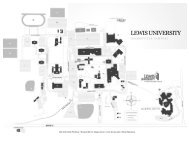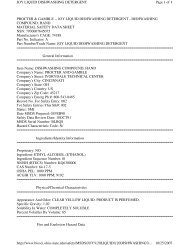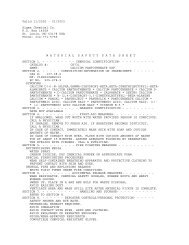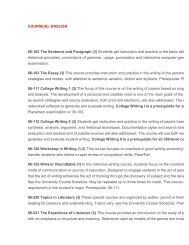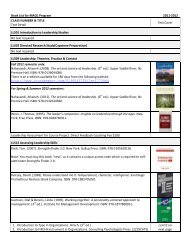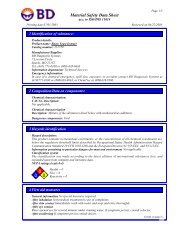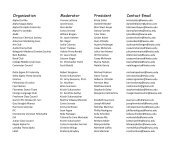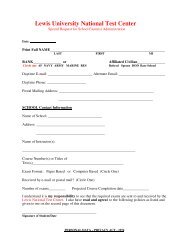Product Isopropyl Rubbing Alcohol 91% USP
Product Isopropyl Rubbing Alcohol 91% USP
Product Isopropyl Rubbing Alcohol 91% USP
- No tags were found...
Create successful ePaper yourself
Turn your PDF publications into a flip-book with our unique Google optimized e-Paper software.
Page 1 of 5Print Date 11/03/2003MSDS Document<strong>Product</strong> <strong>Isopropyl</strong> <strong>Rubbing</strong> <strong>Alcohol</strong> <strong>91%</strong> <strong>USP</strong>1. Chemical <strong>Product</strong> and Company IdentificationTrade Name of this <strong>Product</strong> <strong>Isopropyl</strong> <strong>Rubbing</strong> <strong>Alcohol</strong> <strong>91%</strong> <strong>USP</strong>MSDS ID SF10062ManufacturerContact NameLawson <strong>Product</strong>s, Inc.Corporate Compliance Team1666 East Touhy AvenuePhone NumberDes Plaines, IL 60018(847) 827-9666Emergency Phone(888) 426-4851Revision Date 10/03/2003Fire:Health:130Reactivity:Specific2. Composition and Information on IngredientsIngredient CAS Number Weight % ACGIH TLV PEL STELISOPROPANOL 67-63-0 91 % 400 400.00 500.0WATER 7732-18-5 9 % ND NE NE03. Hazard IdentificationRoute(s) of EntrySkin. Inhalation. Ingestion. Eyes.EyesIrritating, and may injure eye tissue if not removed promptly.SkinFrequent or prolonged contact may irritate the skin and cause a skin rash (dermatitis).InhalationExposure to vapors may cause the following effects: Headaches. Dizziness. Central
nervous system effects. Pulmonary edema. Slightly irritating to eyes and respiratory tract.Gas, vapor, mist, or dust concentrations may be harmful if inhaled. High concentrations maybe fatal.IngestionMay cause chemical pneumonitis if aspirated into lungs. Single dose toxicity is low.Target Organ(s) AffectedEyes. Respiratory tract.Page 2 of 5Print Date 11/03/2003MSDS ID SF10062<strong>Isopropyl</strong> <strong>Rubbing</strong> <strong>Alcohol</strong><strong>91%</strong> <strong>USP</strong>4. First Aid InformationSkinFlush skin with water and follow by washing skin with soap and water. Removecontaminated clothing and footwear.InhalationRemove from exposure. Administer artificial respiration if not breathing. Keep warm andquiet. Get medical attention immediately.IngestionDo not induce vomiting. Keep calm. Contact physician or poison control centerimmediately.EyeFlush with plenty of water for at least 15 minutes. Seek medical attention immediately.5. Fire Fighting MeasuresFlash Point 57°FFP MethodTCCLEL 2UEL 12Extinguishing MediaWater spray. <strong>Alcohol</strong> foam. Dry chemical. Empty containers retain product residue (liquidand/or vapor) and can be dangerous. DO NOT PRESSURIZE, CUT, WELD, BRAZE, SOLDER,DRILL, GRIND, OR EXPOSE SUCH CONTAINERS TO HEAT, FLAME, SPARKS, STATICELECTRICITY, OR OTHER SOURCES OF IGNITION; THEY MAY EXPLODE AND CAUSEINJURY OR DEATH. Empty drums should be completely drained, properly bunged, andpromptly returned to a drum reconditioner, or properly disposed of.Fire and Explosion HazardsEliminate all sources of ignition.Flammable PropertiesFlammable Liquid. Can release vapors that form explosive mixtures at temperatures at orabove the flashpoint.Hazardous Decomposition <strong>Product</strong>sNone known.
Page 3 of 5Print Date 11/03/2003MSDS ID SF10062<strong>Isopropyl</strong> <strong>Rubbing</strong> <strong>Alcohol</strong><strong>91%</strong> <strong>USP</strong>6. Accidental Release MeasuresSmall SpillEvacuate area of unprotected and unnecessary personnel. Shut off source of leak if safe todo so. Eliminate all sources of ignition. Absorb with fire resistant absorbent. Collect andcontain for disposal. Notify appropriate state and local agencies. Dispose of absorbent inaccordance with local, state and federal regulations.Large SpillFollow procedures for small spill. Contain spill by diking or other methods. Remove withvacuum trucks or pump to storage vessel. Do not release into sewers or waterways.7. Handling and StorageHandlingAvoid breathing vapors. Ground and bond containers when transferring material. Do notget in eyes, on skin or clothing. Thoroughly wash hands and exposed skin after handling.Remove contaminated clothing and wash before reuse. Empty containers retain productresidue (liquid and/or vapor) and can be dangerous.StorageAvoid extreme temperature variations. Store in a well ventilated area.8. Exposure Controls and Personal ProtectionEye ProtectionANSI approved safety glasses or splash goggles with face shield are recommended.Protective GlovesThe following glove(s) are recommended to prevent prolonged or repeated contact:Chemical resistant gloves.Other Protective ClothingWhere contact is likely, wear chemical-resistant gloves, a chemical suit, rubber boots, andchemical safety goggles plus a face shield.VentilationProvide mechanical exhaust ventilation. Use explosion-proof ventilation equipment.Respiratory ProtectionWear a NIOSH approved respirator with chemical/mechanical filters for chemicals listed inSection 2 when ventilation is restricted.OSHA Regulation:A TWA of 400 ppm (980 mg/m ) and a STEL of 500 ppm (1225 mg/m ) for <strong>Isopropyl</strong> <strong>Alcohol</strong>.ACGIH recommends:A TWA of 400 ppm (983 mg/m ) and a STEL of 500 ppm (1230 mg/m ) for <strong>Isopropyl</strong> <strong>Alcohol</strong>.
Page 4 of 5Print Date 11/03/2003MSDS ID SF10062<strong>Isopropyl</strong> <strong>Rubbing</strong> <strong>Alcohol</strong><strong>91%</strong> <strong>USP</strong>9. Physical and Chemical PropertiesPhysical StateLiquidSpecific Gravity 0.817Color/AppearanceClear colorlessOdorN/ApHN/ABoiling/Cond. Point 179°FMelting/Freezing Point N/ASolubility 100% at 68°FEvaporation Rate 1.7VOC %N/APercent VolatileN/AViscosityN/AVapor DensityN/AVapor PressureN/A10. Stability and ReactivityStabilityStable.Hazardous PolymerizationWill not occur.IncompatibilityStrong oxidizing agents. Chlorinated compounds. Aldehydes. Caustics. Amine.Hazardous Decomposition <strong>Product</strong>sNone known.11. Toxicological InformationCarcinogenicityNone of the components are listed by NTP, IARC, or OSHA as carcinogenic.12. Ecological InformationEcological InformationNo information available.13. Disposal ConsiderationsWaste Disposal MethodDo not flush to sewer system. Dispose in accordance with federal, state, and localregulations.14. Transportation InformationID NumberUN1993
Page 5 of 5Print Date 11/03/2003MSDS ID SF10062<strong>Isopropyl</strong> <strong>Rubbing</strong> <strong>Alcohol</strong><strong>91%</strong> <strong>USP</strong>Proper Shipping NameFlammable Liquid, N.O.S. (Isopropanol)DOT Class3 (Flammable Liquid)15. Regulatory InformationCPR CertificationThis product has been classified in accordance with the hazard criteria of the Controlled<strong>Product</strong> Regulations and the MSDS contains all of the information required by the Controlled<strong>Product</strong> Regulations.TSCA CertificationAll chemicals in this product are listed, or are exempt from listing on the TSCA inventory.S.A.R.A. Title III, Section 313This product contains the following chemicals subject to reporting:<strong>Isopropyl</strong> <strong>Alcohol</strong> (67-63-0)16. Other InformationDisclaimerThe information accumulated herein is believed to be accurate but is not warranted to bewhether originating with the company or not. Recipients are advised to confirm in advanceof need that the information is current, applicable, and suitable to their circumstances.



